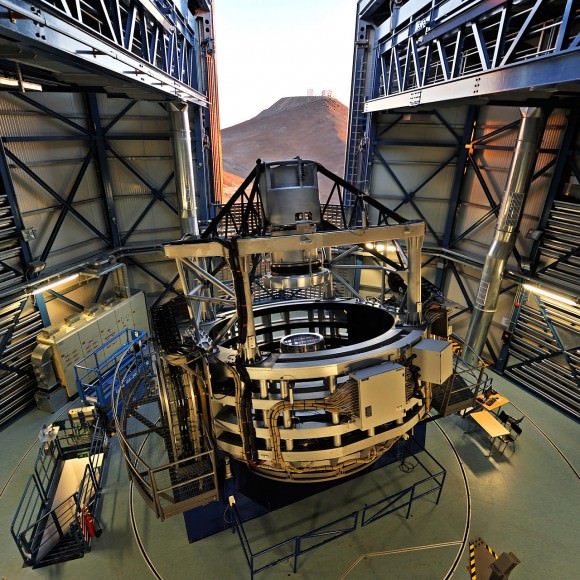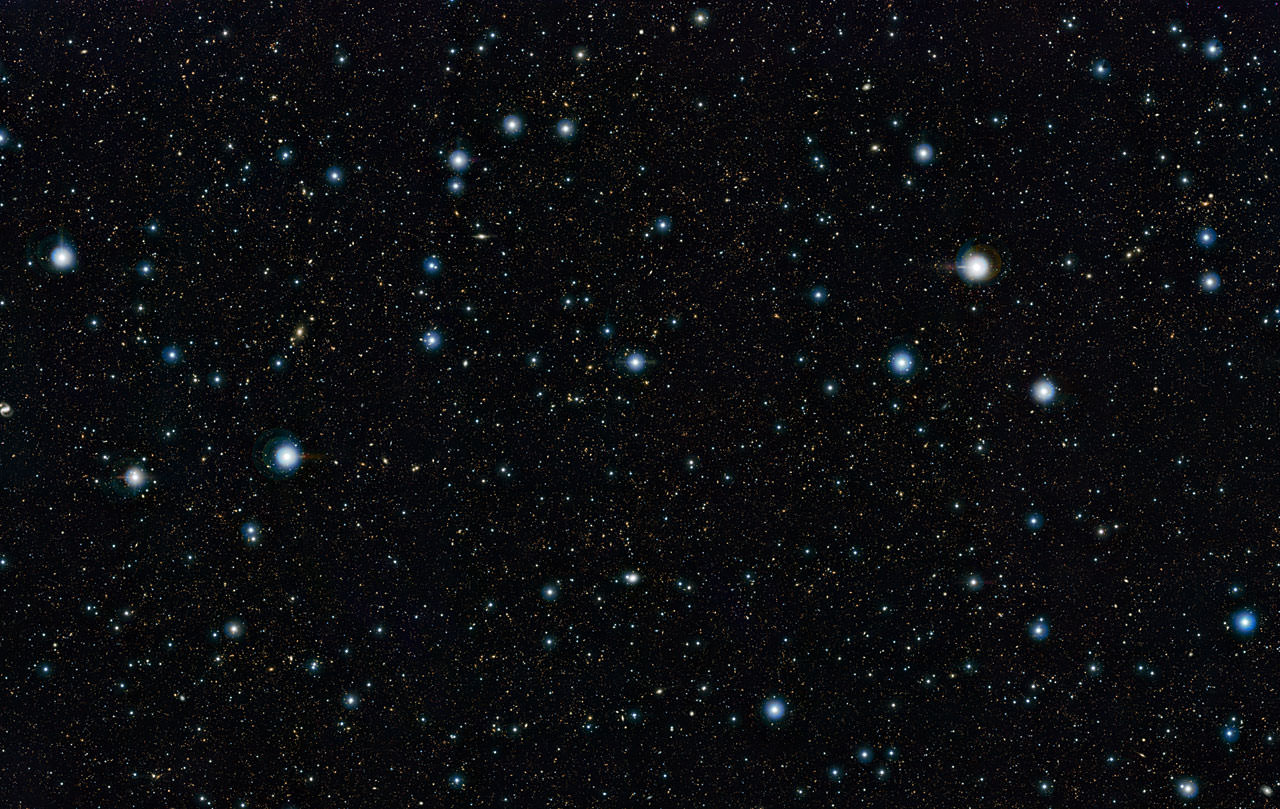[/caption]
See all those tiny points of light in this image? Most of them aren’t stars; they’re entire galaxies, seen by the European Southern Observatory’s VISTA survey telescope located at the Paranal Observatory in Chile.
This is a combination of over 6000 images taken with a total exposure time of 55 hours, and is the widest deep view of the sky ever taken in infrared light.
The galaxies in this VISTA image are only visible in infrared light because they are very far away. The ever-increasing expansion rate of the Universe shifts the light coming from the most distant objects (like early galaxies) out of visible wavelengths and into the infrared spectrum.
(See a full-size version — large 253 mb file.)
ESO’s VISTA (Visual and Infrared Survey Telescope for Astronomy) telescope is the world’s largest and most powerful infrared observatory, and has the ability to peer deep into the Universe to reveal these incredibly distant, incredibly ancient structures.
By studying such faraway objects astronomers can better understand how the structures of galaxies and galactic clusters evolved throughout time.
The region seen in this deep view is an otherwise “unremarkable” and apparently empty section of sky located in the constellation Sextans.
Read more on the ESO website here.



That is impressive. I wonder what the z redshift factor is for some of these.
LC
What a humbling image. If you haven’t, eat into your data limit and download the Hires image, it’s well worth it. I have been panning for hours. Gets me contemplating yet again just how small (and fragile) we are, that we have existed but a cosmic blink of an eye on a tiny speck of real estate within our own “tiny point”.
Sure wished I could decipher what I’m seeing, colour wise. I know it’s an IR image, ESO says it used 5 different filters but what filters and what does each filter reveal per individual object? i.e. how is a galaxy half red and half yellow? I too wonder what objects are what z redshift. I Couldn’t find anything beyond the press release at ESO site. Zooming in closer toward the blurred pixels is fascinating. Pick a dark area and zoom way in, there’s a gazillion more objects. Are some of those faint objects more distant young galaxies and others just very faint foreground stars in our Milky Way?